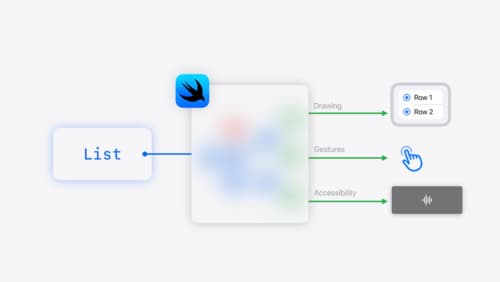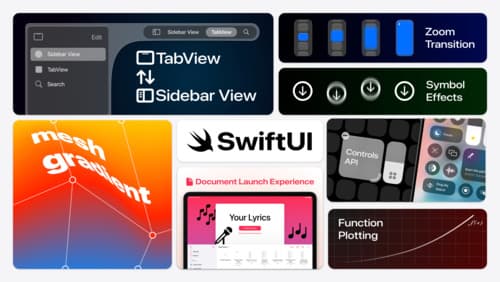pattern in swiftui
Asked on 2025-06-22
1 search
SwiftUI is a powerful framework for building user interfaces across all Apple platforms. It is built on three core principles: declarative syntax, compositional design, and state-driven updates.
Key Patterns in SwiftUI
-
Declarative Syntax: SwiftUI allows you to describe what your UI should look like, and it takes care of rendering it. This means you define the desired state of the UI, and SwiftUI updates the view hierarchy accordingly. This is different from imperative UI frameworks where you manually update the UI.
-
Compositional Design: SwiftUI encourages breaking down your UI into small, reusable components. This is achieved through view composition, where complex UIs are built by combining simpler views. For example, a
Listcan be composed of multipleTextviews, and custom views can be created and reused throughout your app. -
State-Driven Updates: SwiftUI automatically updates the UI when the underlying state changes. This is managed through property wrappers like
@Stateand@Binding, which allow views to react to changes in data. This eliminates the need for manual UI updates and reduces bugs related to state management. -
Adaptive Views: SwiftUI views are designed to adapt to different contexts and styles. For example, buttons and toggles can automatically adjust their appearance based on the platform and context they are used in, such as in menus or forms.
-
Platform-Specific APIs: While SwiftUI provides a common set of components across platforms, it also includes platform-specific APIs to take advantage of unique features, such as the digital crown on watchOS.
For more detailed insights, you can refer to the session SwiftUI essentials (13:06) which covers built-in capabilities and adaptivity in SwiftUI.

SwiftUI essentials
Join us on a tour of SwiftUI, Apple’s declarative user interface framework. Learn essential concepts for building apps in SwiftUI, like views, state variables, and layout. Discover the breadth of APIs for building fully featured experiences and crafting unique custom components. Whether you’re brand new to SwiftUI or an experienced developer, you’ll learn how to take advantage of what SwiftUI has to offer when building great apps.

Explore concurrency in SwiftUI
Discover how SwiftUI leverages Swift concurrency to build safe and responsive apps. Explore how SwiftUI uses the main actor by default and offloads work to other actors. Learn how to interpret concurrency annotations and manage async tasks with SwiftUI’s event loop for smooth animations and UI updates. You’ll leave knowing how to avoid data races and write code fearlessly.

What’s new in SwiftUI
Learn how you can use SwiftUI to build great apps for any Apple platform. Explore a fresh new look and feel for tabs and documents on iPadOS. Improve your window management with new windowing APIs, and gain more control over immersive spaces and volumes in your visionOS apps. We’ll also take you through other exciting refinements that help you make expressive charts, customize and layout text, and so much more.
